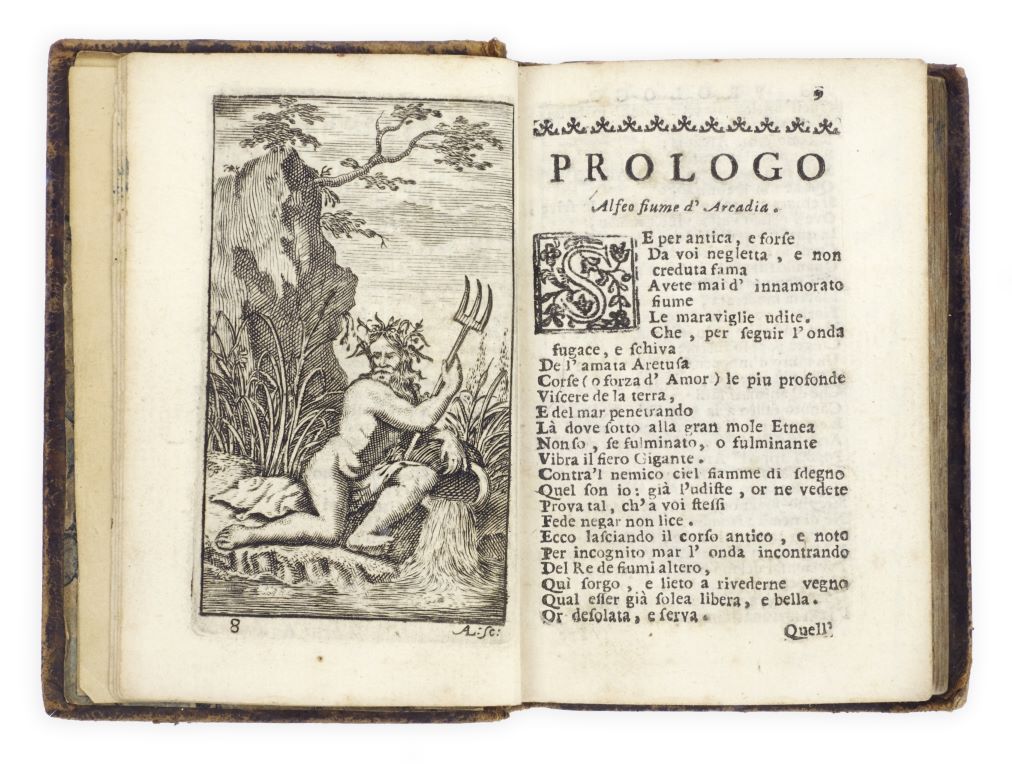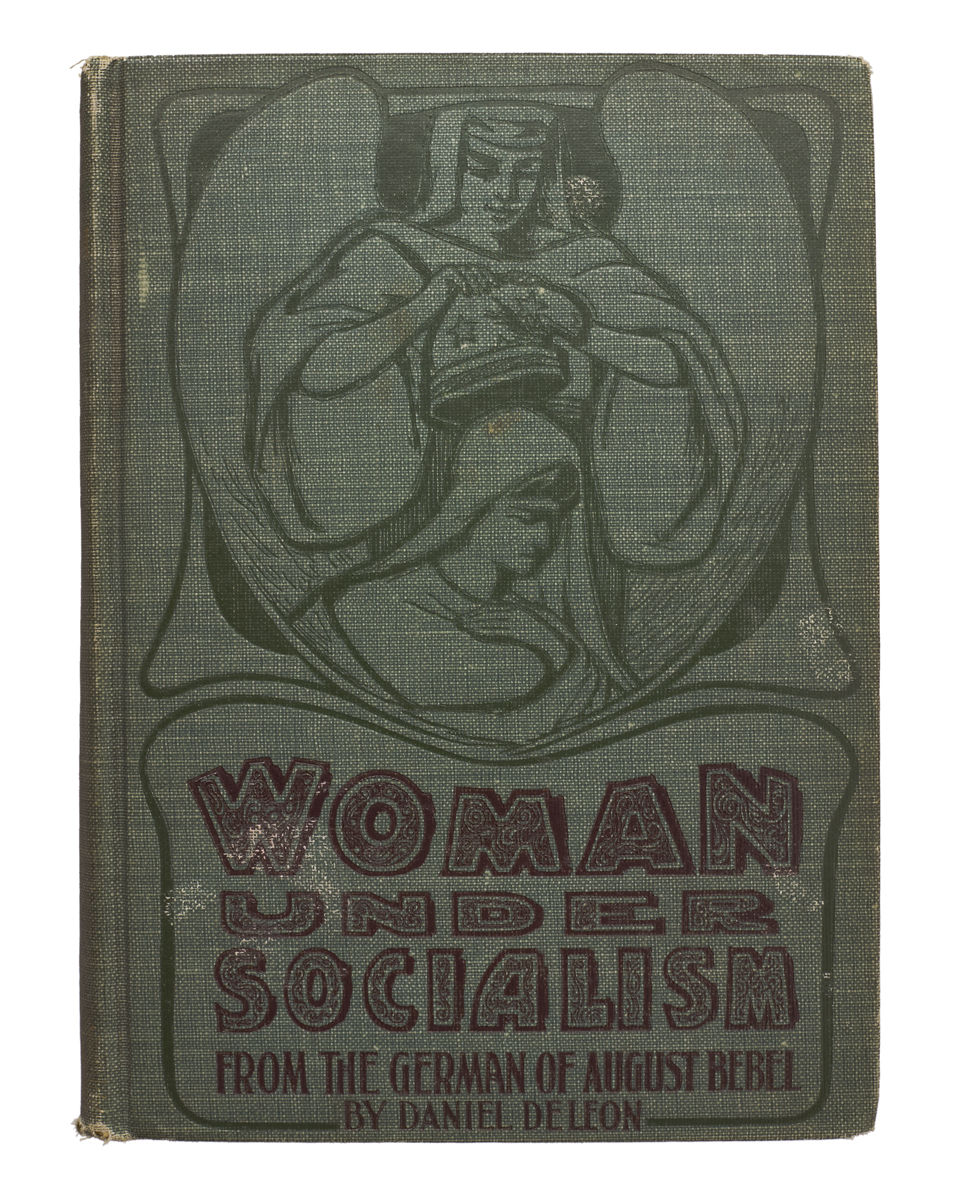
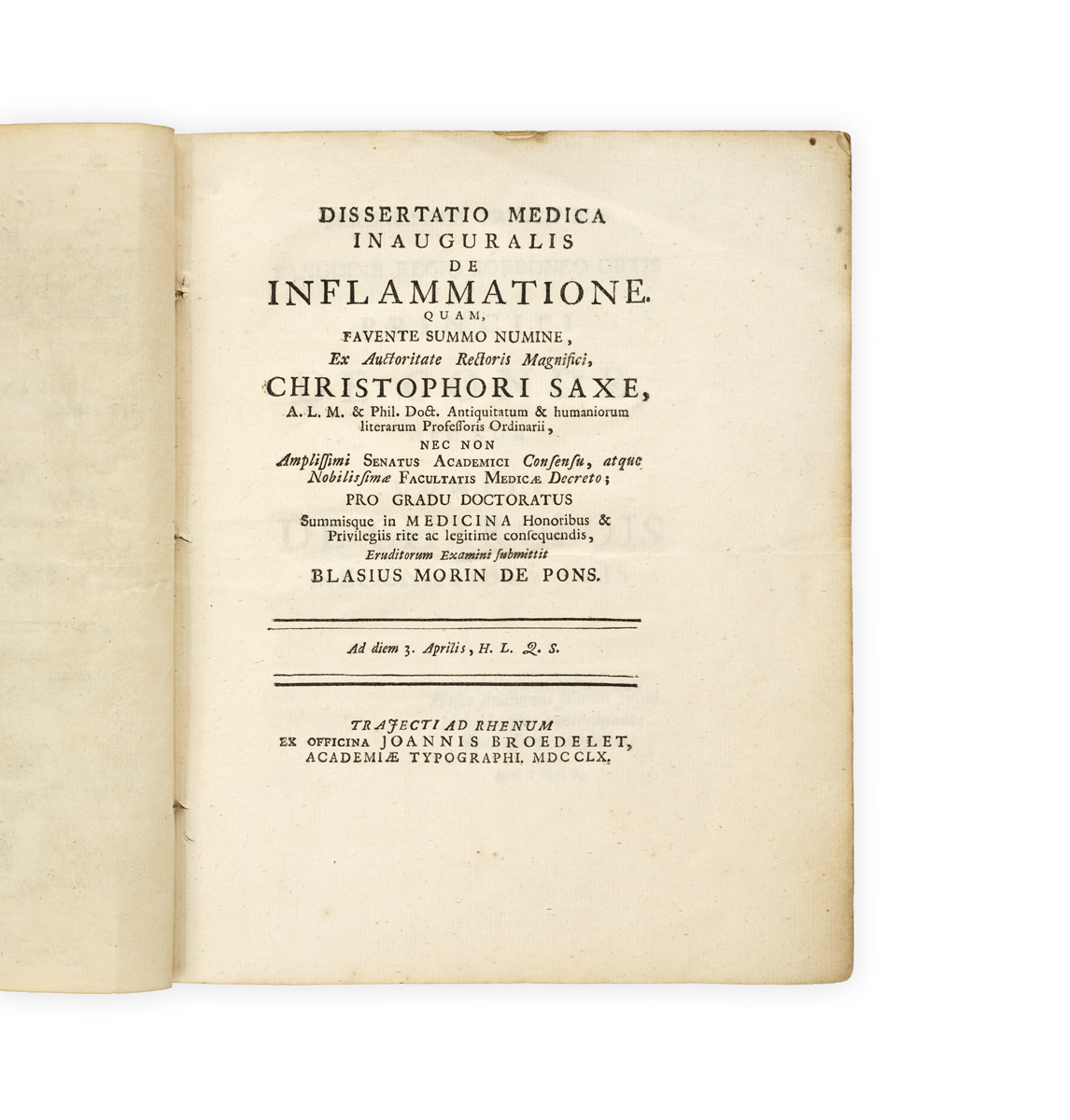
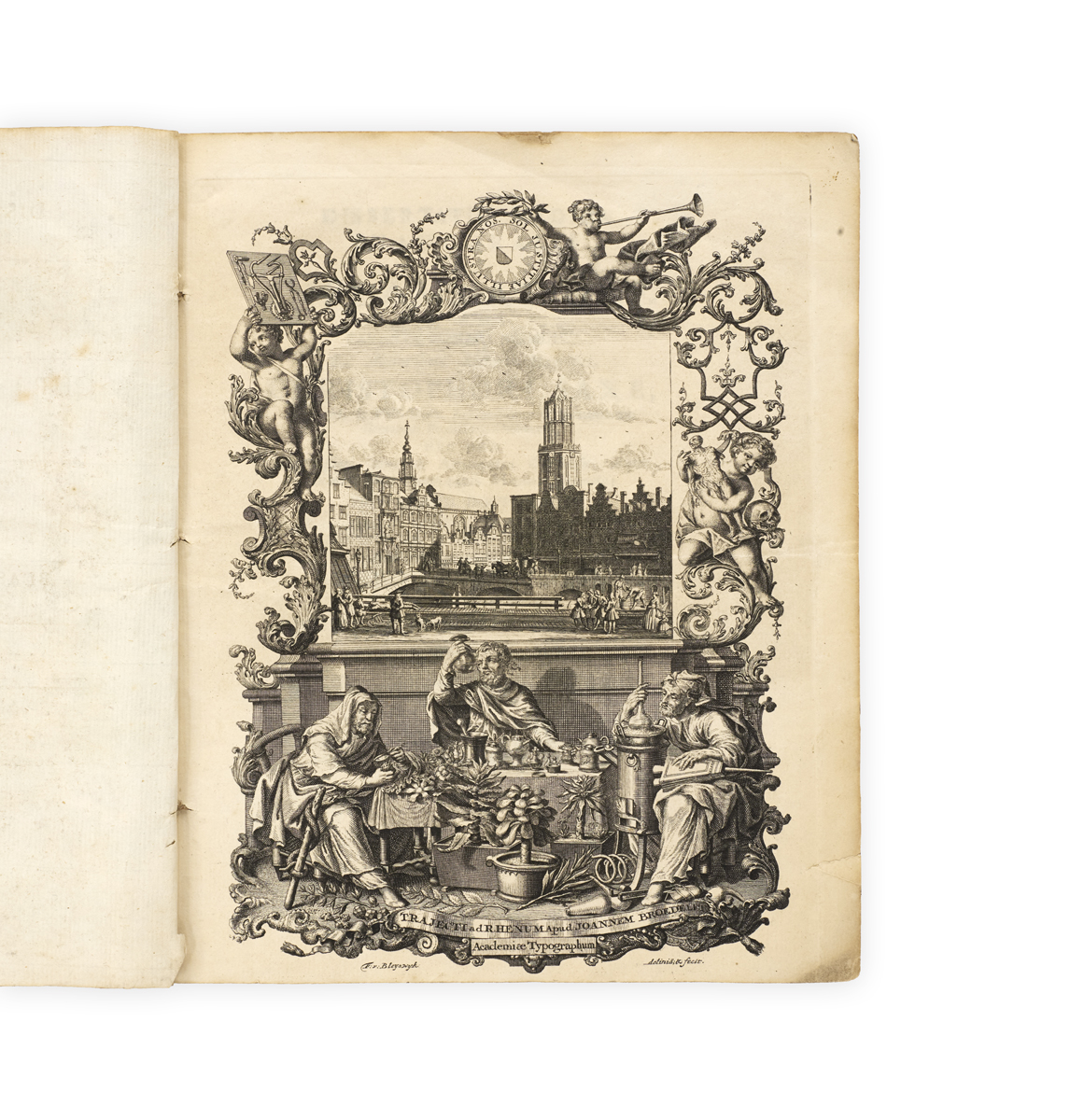
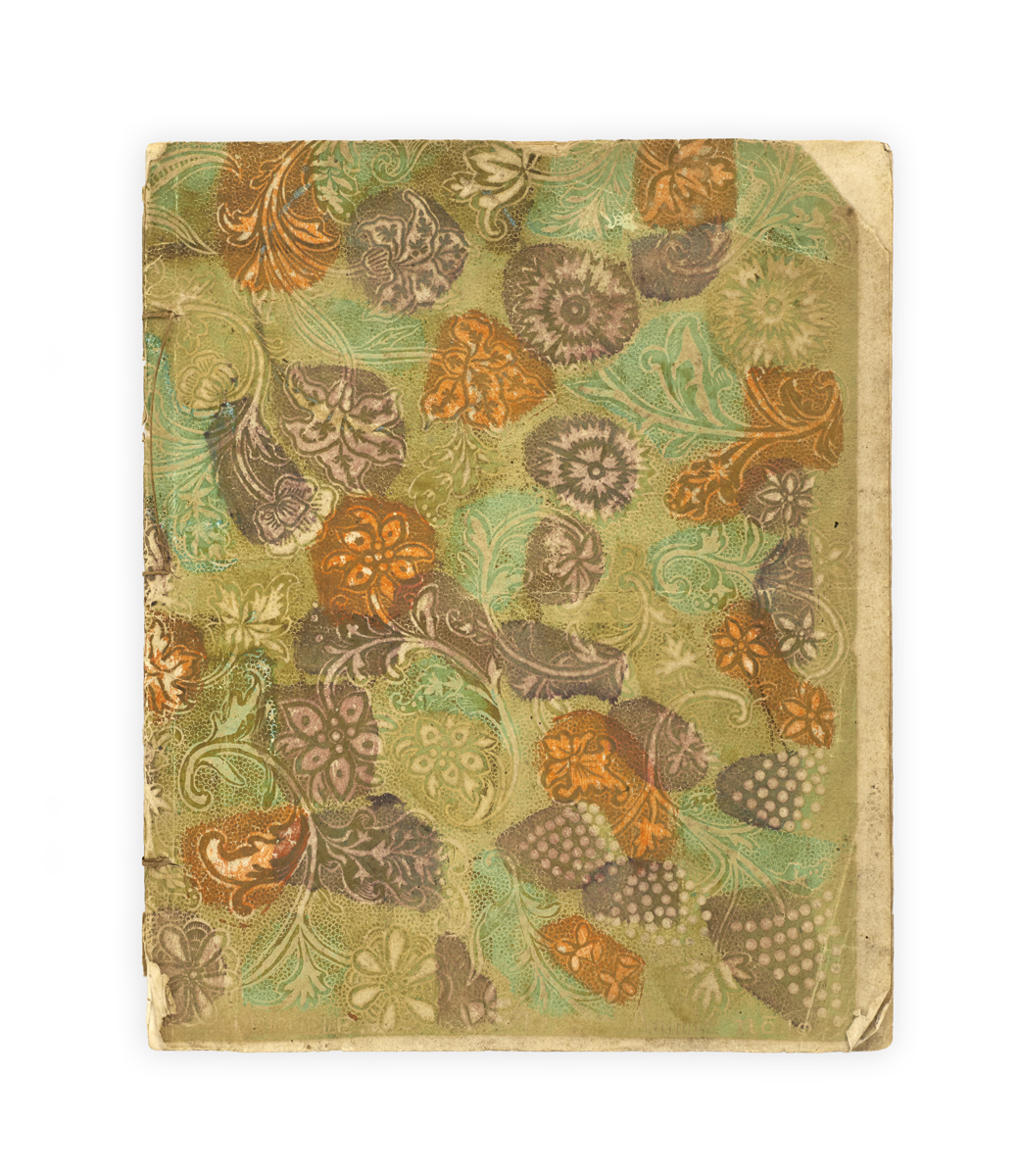
INFLAMMATION
PONS, Blaise Morin de.
Dissertatio medica inauguralis de inflammatione. Quam, favente summo numine, ex auctoritate rectoris magnifici, Christophori Saxe …
Utrecht, Joannes Broedelet, ‘Academiae Typographi’, 1760.
4to, pp. [2 (blank)], [iv], 21, [2], [1 (blank)], engraved frontispiece by Frans van Bleswyck (see below), woodcut initial and tailpiece, typographic headpiece; short closed tear to margin of frontispiece, lightly creased; but a very good copy in contemporary stab-stitched orange, purple, turquoise, and pale green brocade paper, signed ‘Com Priv[ilegio] Sacr[ae] C[ae]s[areae] Maj[estatis]’; small loss to upper corner, spine chipped and worn.

Added to your basket:
Dissertatio medica inauguralis de inflammatione. Quam, favente summo numine, ex auctoritate rectoris magnifici, Christophori Saxe …
First and only edition, rare, of this inaugural medical dissertation on the causes and manifestations of inflammation by Blaise Morin de Pons at the University of Utrecht, illustrated with a magnificent medical frontispiece.
De inflammatione makes explicit to the work of his own teacher, Bernhard Siegfried Albinus (1697–1770), the famous German-born anatomist who, with the engraver Jan Wandelaar, had devised an innovative method of producing highly accurate medical illustrations using a grid. Blaise Morin de Pons hailed from the town of Fraga in Spain, though we know little else about him; he had likely undertaken previous study at Leiden, where Albinus had lectured in anatomy and surgery from 1721. Here, Pons elaborates upon inflammatory swelling and edema, the etymology of inflammation (so called because it results in redness, shiny or tight skin, pain, and heat), the role of the aorta and arteries, and lymphatic vessels, inter alia. The frontispiece by Frans van Bleswyck, with the arms and motto of the University of Utrecht (‘Sol justitiae illustra nos’) above, depicts a bustling view of Utrecht in the background and in the foreground three scholars heating an ampoule and producing ointments with a mortar and pestle, above them putti holding skulls, anatomical models, and surgical instruments.
Scarce outside continental Europe. OCLC finds one copy in the UK, at Edinburgh, and none in the US.
